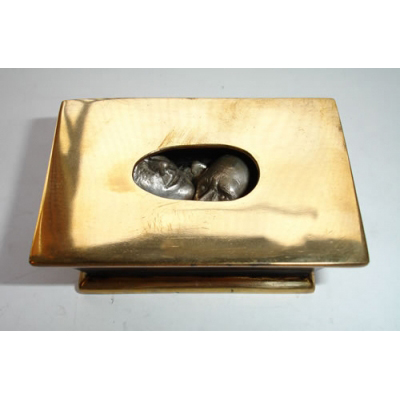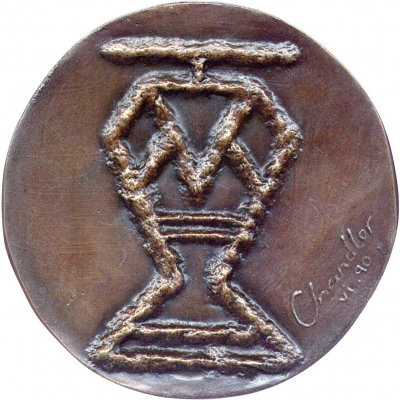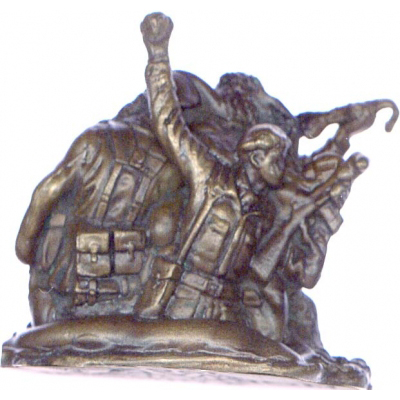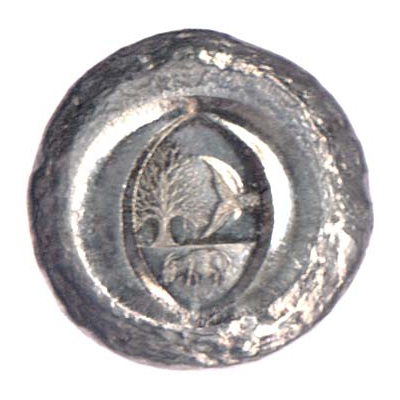Alison Branagan (born 1969) studied art at the University of Central England’s Birmingham Institute of Art and Design, and subsequently at the Sir John Cass School of London Guildhall University, where she obtained an MA in applied art and visual culture. She has subsequently been artist in residence at Kensington and Chelsea College, London, as part of the college’s artist in residence post-graduate programme, and now lectures part-time at that college. Since 1996 Alison Branagan’s work has appeared in exhibitions in Britain and abroad. In 1997 she won a Goldsmith’s precious metal bursary and craftsmanship award, and in the same year was awarded joint first prize in the Birmingham Assay award. She is a licentiate of the Society of Designer Craftsmen, and has recently been commissioned by the Scottish Touring Consortium to create a piece of work for their millennium touring exhibition, Monumental Miniatures. Her report on the 1998 FIDEM congress at The Hague appeared in Mitali Medaljen, 2 (1998), pp.23-4. Her medal for BAMS, Gamut in an Armoire, is cast in bronze, and is available with either bronze or silver heads. The lid and one of the heads are removable. The artist writes: ” ‘Gamut’ means ‘range’ and ‘Armoire’ means ‘large metal box’. These two words have been brought together to describe this piece. Though the word ‘armoire’ usually refers to something large, it has here more of an ironic meaning. The heads are representative of our emotions which we hide when not showing our true feelings, whether by choice or circumstance. “The piece is made to look worn but cared for. This work is not about neglect, but is does have echoes of sentiment (not sentimentality). It carries its own slightly strange and obscure sense of history and possible use. At one point I considered putting small handles either side of the box, to suggest that it was portable, but decided not to, as the work is meant to imply that emotions are not carried around; to leave out the handles suggests that the possessor of the object must return to the box in order to replace their sentiments. The box offers temporary storage. The pieces within its shallow metal walls are hidden, collected, and used, but also small and vulnerable. “The piece is a modern medal, with the obverse being the outside of the box and the inside the reverse.” The artist also points out that the version containing the silver heads brings with it “the cultural association of preciousness. This piece will instantly carry the implication of treasure.”
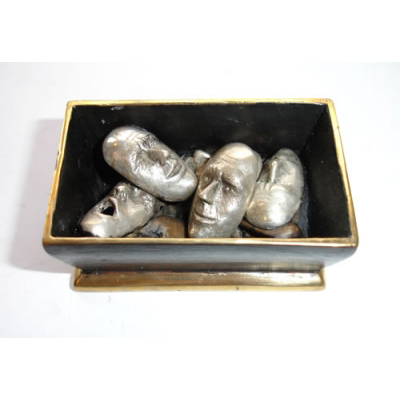
Gamut in an Armoire
Gamut in an Armoire
By: Alison Branagan, 1999
Medium: cast bronze (with bronze or slver heads)
Size: 66 x 44 x 28mm
Cast by: BAC Castings
Edition: 15
